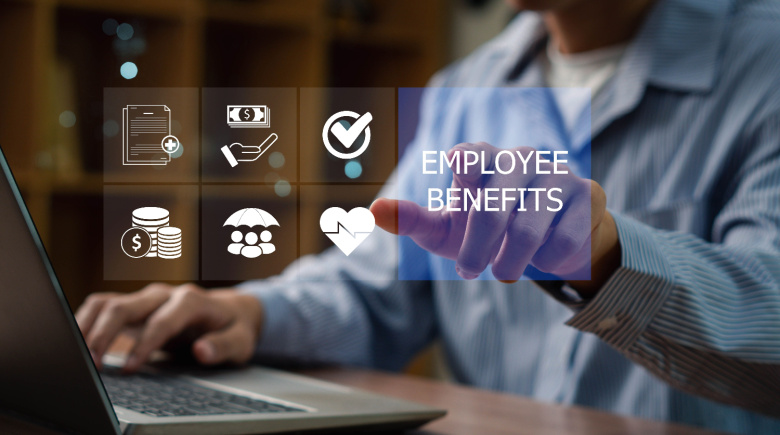The world of work has transformed dramatically in recent years, and as we progress through 2025, employee benefits have become more important than ever. Traditional offerings like health insurance, paid time off, and retirement plans are no longer enough to attract and retain top talent. Today’s workforce values more than just financial compensation—they prioritize overall well-being, work-life balance, and opportunities for career growth. To stay competitive, companies are rethinking their benefits strategies, introducing flexibility, wellness programs, and inclusive policies that appeal to a diverse and evolving workforce.
This shift is driven by several key factors: rapid technological advancements, changing workforce demographics, and the normalization of remote and hybrid work models. Millennials and Gen Z now make up the majority of the labor force, and they bring new expectations to the table. They want flexibility, mental health support, and continuous learning opportunities. In response, companies are adopting AI-powered HR tools and wellness platforms that allow for more personalized and responsive benefits tailored to individual employee needs.
The rise of remote and hybrid work—accelerated by the COVID-19 pandemic—has also changed the game. Perks that once defined the office experience, like on-site gyms, free lunches, or commuter benefits, are losing relevance. Instead, businesses are offering home office stipends, virtual wellness initiatives, and online team-building activities to meet employees where they are. As mental health becomes a mainstream concern, organizations are implementing robust wellness programs, flexible schedules, and enhanced mental health support to foster a healthier, happier workforce.
One of the most prominent trends in 2025 is the expansion of mental health and wellness benefits. Recognizing that mental well-being is just as vital as physical health, companies now offer free access to virtual therapy, meditation apps, and AI-driven wellness tools that track stress and suggest personalized coping strategies. Many organizations have introduced dedicated mental health days—distinct from sick leave—to allow employees time to recharge without guilt or stigma.
Customization is also a defining feature of modern benefits. Employees no longer want one-size-fits-all solutions—they seek options that align with their personal lives and values. Flexible benefits programs let workers choose what’s most important to them. For example, Lifestyle Spending Accounts (LSAs) allow employees to use allocated funds for a range of expenses, from fitness classes and child care to professional development and even travel. This flexibility signals that companies value their employees as individuals, not just as workers.
Financial wellness is another key focus. With rising living costs and the burden of student loans, financial stress is a real concern affecting both performance and morale. In response, companies are offering benefits like student loan repayment assistance, financial planning services, and even on-demand pay apps that give employees early access to earned wages.
Family and parental benefits are evolving too. Businesses now recognize the importance of supporting work-life balance through generous paid parental leave for all parents, fertility and adoption support, and even subsidized or on-site childcare. These offerings not only enhance employee satisfaction but also improve retention and create a more supportive workplace culture.
The demand for continuous learning is also reshaping benefits packages. As job roles evolve rapidly, companies are investing in upskilling programs to keep employees competitive. Benefits such as tuition reimbursement, paid professional development sabbaticals, and access to AI-powered learning platforms are now standard in many organizations. These initiatives benefit both employees and employers, ensuring that the workforce remains agile and future-ready.
Socially conscious benefits and sustainability initiatives are also on the rise. Employees increasingly want to work for companies that align with their values and make a positive impact. To that end, organizations are offering paid volunteer days, eco-friendly commuting incentives like EV subsidies and public transit passes, and even carbon footprint tracking tools to help employees reduce their environmental impact.
Flexibility remains a cornerstone of attractive benefits packages. Companies that offer remote work options, adaptable schedules, and benefits that cater to individual lifestyles will stand out in the competition for top talent. Comprehensive wellness programs—covering physical, mental, and financial well-being—are now essential. Moreover, designing benefits that cater to a multigenerational workforce, from young professionals to working parents and older employees, is key to building loyalty and engagement.
Ultimately, the future of employee benefits in 2025 lies at the intersection of well-being, personalization, and flexibility. Companies that embrace these changes early won’t just attract top-tier talent—they’ll foster a culture of engagement, productivity, and holistic job satisfaction. With today’s employees seeking more than just a paycheck, organizations must rethink how they support their teams across all aspects of life. By doing so, they’ll create workplaces that benefit both people and business.
The world of work has transformed dramatically in recent years, and as we progress through 2025, employee benefits have become more important than ever. Traditional offerings like health insurance, paid time off, and retirement plans are no longer enough to attract and retain top talent. Today’s workforce values more than just financial compensation—they prioritize overall well-being, work-life balance, and opportunities for career growth. To stay competitive, companies are rethinking their benefits strategies, introducing flexibility, wellness programs, and inclusive policies that appeal to a diverse and evolving workforce.
This shift is driven by several key factors: rapid technological advancements, changing workforce demographics, and the normalization of remote and hybrid work models. Millennials and Gen Z now make up the majority of the labor force, and they bring new expectations to the table. They want flexibility, mental health support, and continuous learning opportunities. In response, companies are adopting AI-powered HR tools and wellness platforms that allow for more personalized and responsive benefits tailored to individual employee needs.
The rise of remote and hybrid work—accelerated by the COVID-19 pandemic—has also changed the game. Perks that once defined the office experience, like on-site gyms, free lunches, or commuter benefits, are losing relevance. Instead, businesses are offering home office stipends, virtual wellness initiatives, and online team-building activities to meet employees where they are. As mental health becomes a mainstream concern, organizations are implementing robust wellness programs, flexible schedules, and enhanced mental health support to foster a healthier, happier workforce.
One of the most prominent trends in 2025 is the expansion of mental health and wellness benefits. Recognizing that mental well-being is just as vital as physical health, companies now offer free access to virtual therapy, meditation apps, and AI-driven wellness tools that track stress and suggest personalized coping strategies. Many organizations have introduced dedicated mental health days—distinct from sick leave—to allow employees time to recharge without guilt or stigma.
Customization is also a defining feature of modern benefits. Employees no longer want one-size-fits-all solutions—they seek options that align with their personal lives and values. Flexible benefits programs let workers choose what’s most important to them. For example, Lifestyle Spending Accounts (LSAs) allow employees to use allocated funds for a range of expenses, from fitness classes and child care to professional development and even travel. This flexibility signals that companies value their employees as individuals, not just as workers.
Financial wellness is another key focus. With rising living costs and the burden of student loans, financial stress is a real concern affecting both performance and morale. In response, companies are offering benefits like student loan repayment assistance, financial planning services, and even on-demand pay apps that give employees early access to earned wages.
Family and parental benefits are evolving too. Businesses now recognize the importance of supporting work-life balance through generous paid parental leave for all parents, fertility and adoption support, and even subsidized or on-site childcare. These offerings not only enhance employee satisfaction but also improve retention and create a more supportive workplace culture.
The demand for continuous learning is also reshaping benefits packages. As job roles evolve rapidly, companies are investing in upskilling programs to keep employees competitive. Benefits such as tuition reimbursement, paid professional development sabbaticals, and access to AI-powered learning platforms are now standard in many organizations. These initiatives benefit both employees and employers, ensuring that the workforce remains agile and future-ready.
Socially conscious benefits and sustainability initiatives are also on the rise. Employees increasingly want to work for companies that align with their values and make a positive impact. To that end, organizations are offering paid volunteer days, eco-friendly commuting incentives like EV subsidies and public transit passes, and even carbon footprint tracking tools to help employees reduce their environmental impact.
Flexibility remains a cornerstone of attractive benefits packages. Companies that offer remote work options, adaptable schedules, and benefits that cater to individual lifestyles will stand out in the competition for top talent. Comprehensive wellness programs—covering physical, mental, and financial well-being—are now essential. Moreover, designing benefits that cater to a multigenerational workforce, from young professionals to working parents and older employees, is key to building loyalty and engagement.
Ultimately, the future of employee benefits in 2025 lies at the intersection of well-being, personalization, and flexibility. Companies that embrace these changes early won’t just attract top-tier talent—they’ll foster a culture of engagement, productivity, and holistic job satisfaction. With today’s employees seeking more than just a paycheck, organizations must rethink how they support their teams across all aspects of life. By doing so, they’ll create workplaces that benefit both people and business.





